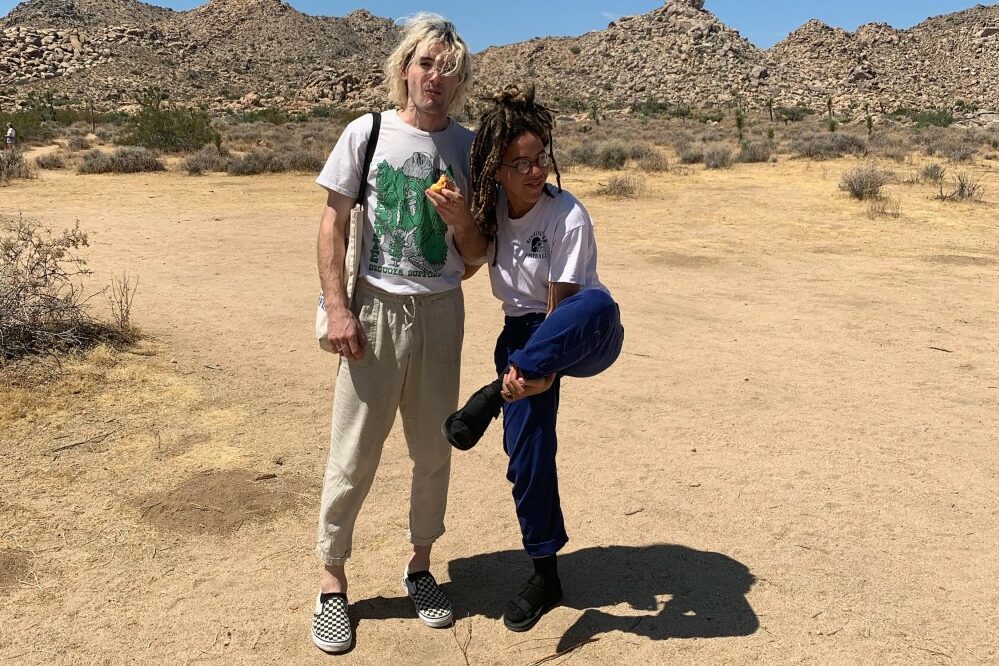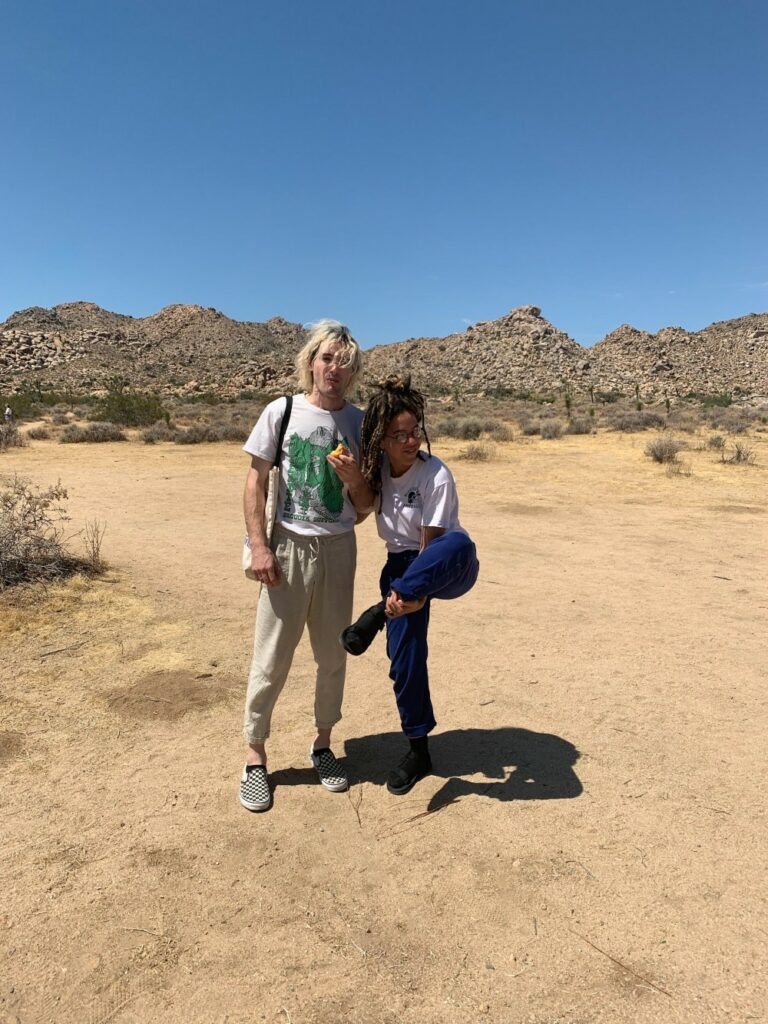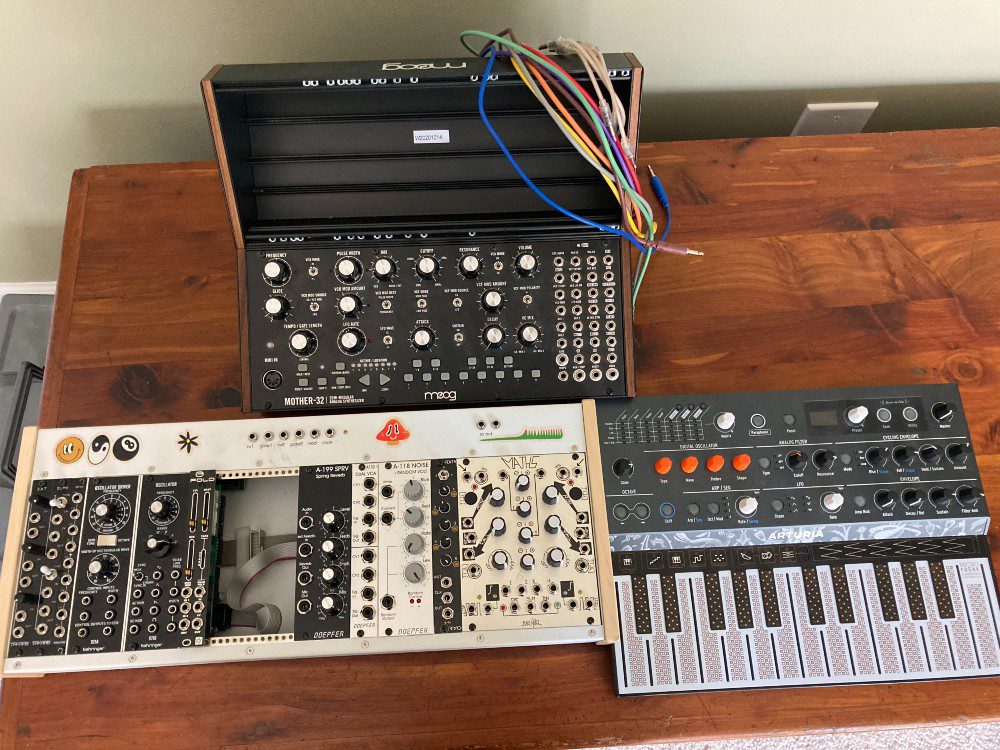

Over the last year, many of us have picked up new hobbies to fill the endless expanse of time between the initial lockdown and the present, the uncertain future of when life will go back to “normal” and what that even means at this point. No longer do we measure time in minutes, days, or weeks, it would seem, but rather through loaves of sourdough bread and craft projects and how long it took your tomato plant to produce fruit last summer. Em Boltz, one half of Philly experimental electronic duo Enchanted Forest, is no different than the rest of us, except they spent their year delving deep into the world of modular synth construction.
A recipient of the Audiofemme Agenda Artist Grant, Boltz used the grant money towards the completion of an ambitious project – a recreation of the Buchla Music Easel (the iconic Additive Analogue Synthesizer spoken of in reverent tones since its incarnation in 1973) using Eurorack modules. If that sounds like a foreign language to you, that’s okay – it does to me too. The most important takeaway is that the true Buchla Music Easel will run you over $3,000, whereas you can get pretty close to creating your own for much less.
Essentially, Boltz has been scouring the internet for elements that help to imitate the Easel’s unique sonic possibilities, bits and pieces like oscillators, low pass gates, and spring reverbs, and patching them together to try and produce the organic, “magical acoustic space” that only the Buchla itself offers as a compact package. Using a Eurorack format as the base allows the user to customize their desired experience as it has no set signal flow, so that one can gain the most from whatever singular modular components they desire.

Boltz’s interest in the Buchla was born of their love of psychedelic and krautrock music, as well as the compositions of artists like Suzanne Ciani and Terry Riley, both of whom included the Buchla in their musical repertoire. “This isn’t by any means a precise replica of the Buchla,” Boltz explains. “And I’m still very much learning how to navigate modular synths, but this is like my intro to it as well. I’ve just been slowly adding modules and integrating them into this Eurorack that I’m creating, which has been overwhelming definitely, but also super exciting… It’s been interesting, building a synth, because I feel like my approach to music is so intuitive, and I’ve been reading so much and trying to recreate this thing.”
The challenge is further magnified by Boltz’s background in the humanities; as a poet and an English student at Kent State University, they had no formal background in such a technical practice. They’ve largely depended on YouTube and web forums to amass the necessary knowledge. “I feel like I learn something new every day,” they say. “I’m constantly trying to watch videos of other people talking about their set-ups… because essentially you’re recreating what someone [else] has created when you go buy a synthesizer, so there are all these different variations of what you could do… the possibilities are limitless.” The goal here is to recreate the uniquely organic sounds the Buchla is capable of – a “60s zingy vibe,” or an “acoustic funk,” for instance, according to one video I watched to try to get a handle on this. The Buchla, even as a replica, makes what Boltz says is “the trippiest stuff. It’s the simplest way you can put it.”
So far they’ve been successful, utilizing the makeshift Buchla to write and record the latest Enchanted Forest release, a visual album appropriately titled Research, out on Dear Life Records on June 18. The tracks, and their accompanying videos, focus on the intersection of the natural and digital worlds; “a lot play with nature because I just love nature, and I feel like that’s something I see through all the work I do, like poetry, music, writing,” Boltz says. “Making things that sound like they’re created in nature, which is what’s so cool about working with analog gear. It’s this really organic sound to it that really aids that.”
Today, Boltz shares what they call “abstracted visuals” for two of the LP’s tracls – “The Tap” and “Open Window” – premiering exclusively on Audiofemme. On “Open Window” you can hear the sound of birds chirping layered under the synth effects. Though they are already using the synthesizer to produce music, it seems as though the project could carry as long as long as Boltz wants it to, acquiring new pieces of equipment and patching them into the existing set-up.
Enchanted Forest began as a Boltz’s solo endeavor, but it has recently expanded to include Noah Jacobson-Caroll, who Boltz met in 2017 when both played guitar in dark pop group Corey Flood. Research was written and recorded through email correspondence over the last year. “This band started in May 2020, so it’s only ever known COVID,” Boltz says. “The new album is all recorded through this karaoke machine, at least on my part. It’s all just us sending stuff back and forth.”
As far as what’s next, they say, “We’re already working on another album. We don’t stop.” Enchanted Forest intends to continue to collaborate remotely, because Boltz says they’ve “really come to enjoy creating this way.” And with seemingly endless possibilities, Research seems like an intriguing prologue to what Em Boltz and Enchanted Forest will create as time goes on. “Honestly it’s the best album I’ve ever made, which feels really good.”

